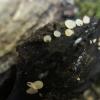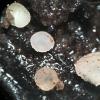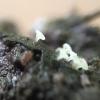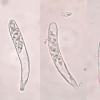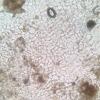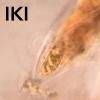
29-12-2025 09:38
Oskari VirtanenHi,could anyone help me identify this, I suspect P

29-12-2025 08:30
Hello.A tiny ascomycete sprouting under Juniperus

28-12-2025 12:08
Margot en Geert VullingsThis possible Karstenia was found on the bark of d

21-12-2025 21:32
Pol DebaenstHello, Garden, Burgweg 19, Veurne, BelgiumOn 10/1

26-12-2025 21:19
Arnold BüschlenPithyella chalaudii Priou. Ist als Bryoparasit in

21-12-2025 09:32
Hello.A tiny ascomycete found embedded in wood in

18-12-2025 21:17
Pol DebaenstThe identification took me to Byssonectria deformi

24-12-2025 17:08
Hulda Caroline HolteHello, I have found this propoloid ascomycete on
Hymenoscyphus fructigenus?
Ethan Crenson,
26-10-2017 07:03
Hans-Otto Baral,
26-10-2017 07:23

Re : Hymenoscyphus fructigenus?
Completely impossible for a relationship with H. fructigenus. This one has rather short homopolar sporres and I am not even certain with the genus.
You should try better photos of the ascus apex, perhaps the amyloidity and the shape of the apical ring become more clear.
What you have is perhaps Hymenoscyphus varicosporoides = Cudoniella indica = Hymenosc. "calycinoides", a species with an interesting semiaquatic anamorph.
Try this link:
https://drive.google.com/drive/folders/0B5SeyOEkxxZhYXZaR2VWSG50aVk
You should try better photos of the ascus apex, perhaps the amyloidity and the shape of the apical ring become more clear.
What you have is perhaps Hymenoscyphus varicosporoides = Cudoniella indica = Hymenosc. "calycinoides", a species with an interesting semiaquatic anamorph.
Try this link:
https://drive.google.com/drive/folders/0B5SeyOEkxxZhYXZaR2VWSG50aVk
